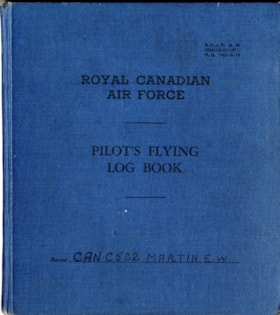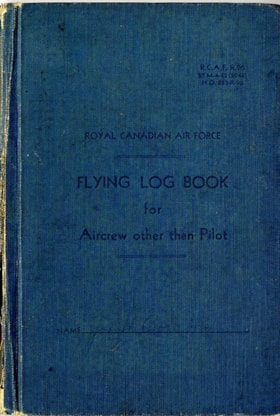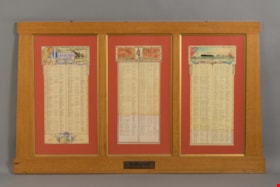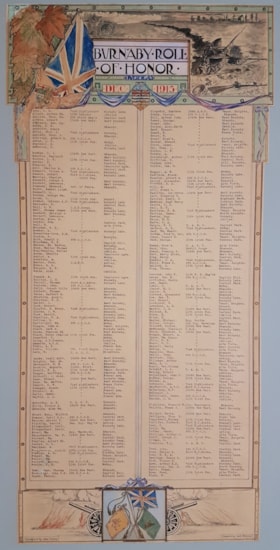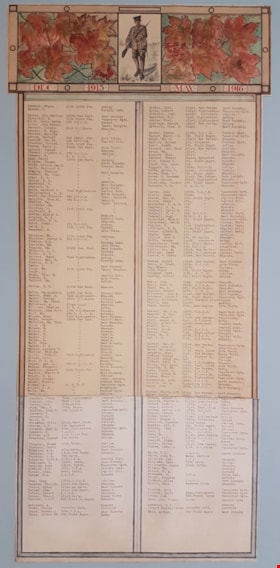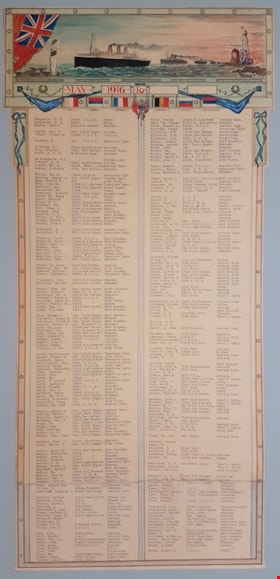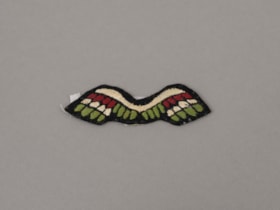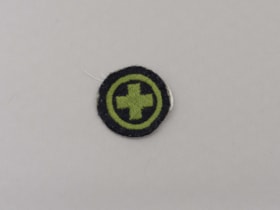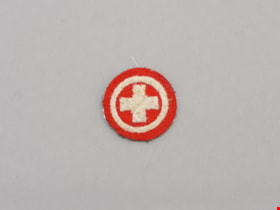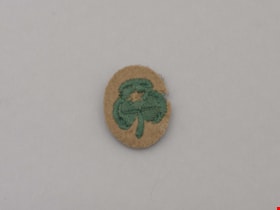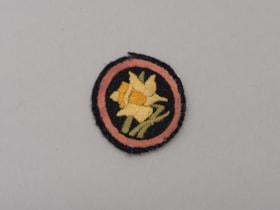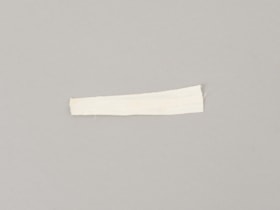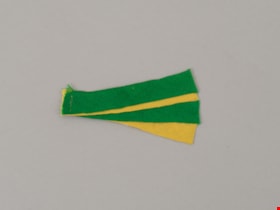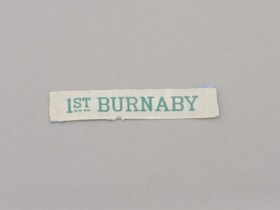More like 'Air force singing group'
Narrow Results By
Subject
- Agriculture 1
- Agriculture - Farms 2
- Buildings - Commercial - Grocery Stores 1
- Buildings - Commercial - Restaurants 2
- Buildings - Commercial - Service Stations 1
- Buildings - Industrial - Saw Mills 1
- Buildings - Religious - Mosques 1
- Businesses 1
- Cemeteries 1
- Ceremonies - Funerals 1
- Ceremonies - Weddings 1
- Clothing 1
Person / Organization
- Air Raid Precautions (A.R.P.) 3
- Arora, Maninder 1
- Babey, Beverley 1
- Bailey, Joan 8
- British Columbia Hydro and Power Authority 1
- British Columbia Organization to Fight Racism 1
- Burnaby Central Secondary School 1
- Burnaby South High School 1
- Burnaby Symphony Orchestra 1
- Burquest 2
- Canada Way Food Market 1
- Canadian Farmworkers Union 1
honour roll
https://search.heritageburnaby.ca/link/museumartifact79416
- Repository
- Burnaby Village Museum
- Accession Code
- X2834
- Description
- Roll of Honor for soldiers in World War II who came from Burnaby; large wooden tripartate frame with typed lists of names in each panel. "Burnaby Roll of Honour World War II". The honour roll and frame was made in 2005 by the request of the Heritage Commission.
- Object History
- Honour rolls that recognize individuals that serve in the time of war have been used by communities throughout Canada and the Commonwealth as a traditional act of remembrance. These memorials consist of a list of veterans that is compiled to ensure that names of all service men and women are included, with their rank and service acknowledged. The "Heroic Dead" have been traditionally marked on Canadian honour rolls with the addition of a cross and/or maple leaf beside the honoured name. Typically this sombre memorial is crafted in traditional style using calligraphy for the names listed on the "tablets" and native woods and brass for the frame materials. Burnaby has a proud history of men and women who served by volunteering for active service. The community honoured its war heroes during World War I with an impressive Honour Roll crafted by civic staff and dedicated at the former Municipal Hall at Edmonds on July 14, 1916. The intention of this memorial was to "keep the record bright before the people of the municipality". At the conclusion of this war over 1,200 names of service men and women were listed including over 90 "Heroic Dead" who paid the "ultimate sacrifice". The Burnaby Honour Roll (BV004.54.1) remained as an important civic memorial on public display in the old municipal hall and was the focus of many annual Remembrance Day services. It consisted of a wooden frame with three paper "rolls."
- Country Made
- Canada
- Province Made
- British Columbia
- Site/City Made
- Burnaby
- Subjects
- Wars - World War, 1939-1945
Images
Documents
Interview with Norman Dowad
https://search.heritageburnaby.ca/link/museumdescription19638
- Repository
- Burnaby Village Museum
- Date
- [1890-2023] (interview content), interviewed 14 Aug. 2023
- Collection/Fonds
- Burnaby Village Museum fonds
- Description Level
- Item
- Physical Description
- 1 sound recording (wav) (61 min., 37 sec.) + 1 sound recording (mp3) (61 min., 37 sec.)
- Scope and Content
- Item consists of a recording of an oral history interview with Norman Dowad conducted by Burnaby Village Museum Registrar, Eric Damer on August 14, 2023. 00:00:00 – 00:14:38 Norm shares biographical information about himself and background information on the Dowad family. Norm conveys information …
- Repository
- Burnaby Village Museum
- Collection/Fonds
- Burnaby Village Museum fonds
- Series
- Museum Oral Histories series
- Subseries
- Many Voices Project Interviews subseries
- Description Level
- Item
- Physical Description
- 1 sound recording (wav) (61 min., 37 sec.) + 1 sound recording (mp3) (61 min., 37 sec.)
- Material Details
- Interviewer: Eric Damer Interviewee: Norman Dowad Location of Interview: Burnaby Village Museum Interview Date: August 14, 2023 Total Number of tracks: 1 Total Length of all Tracks: 01:14:37 Digital master recording (wav) was converted to mp3 for access on Heritage Burnaby
- Scope and Content
- Item consists of a recording of an oral history interview with Norman Dowad conducted by Burnaby Village Museum Registrar, Eric Damer on August 14, 2023. 00:00:00 – 00:14:38 Norm shares biographical information about himself and background information on the Dowad family. Norm conveys information about his grandfather Samuel Dowad's immigration to Canada and his father Wilfred Dowad's military service and successes as a property developer. 00:14:39 – 00:17:26 Norm provides background information on his mother’s side of the family. 00:17:27 – 00:31:36 Norm talks about his childhood, growing up in the Deer Lake neighbourhood, his early education in Burnaby and sports that he played. 00:31:37 – 00:39:59 Norm talks about his educational experiences attending Simon Fraser University, University of British Columbia and Osgoode Hall law school and information regarding his law career. 00:40:00 – 00:45:03 Norm reflects on his childhood growing up in Burnaby and on his experiences and relationships as a student and in his career as a lawyer. 00:45:04 – 01:01:37 Norm talks about his siblings and shares information about family property development projects as well as career and business successes. In closing he talks about research that he’s done through Archives Canada on his grandfather Sam Dowad and father Wilfred Dowad.
- History
- Interviewee biography: Norm Dowad was born in Burnaby, December 1948 to parents Wilfred “Wilf” (1925-2011) and Cherry Dowad. His father, Wilfred (1925-2011) was born in Winnipeg to parents Samuel “Sam” (Salim in Arabic) Esper Dowad (1895-1969) and Martha (Shaheen) Dowad (1894-1955). Sam and Martha Dowad were both born in a province of the Ottoman Empire which is now present day Lebanon. In 1912, while trying to immigrate to Canada, several of Sam’s relatives including his mother died tragically as steerage passengers on the ill fated Titanic. In 1913, at the age of 18 years, Sam immigrated to Canada to join other family members who'd already arrived here safely. As a new immigrant in Canada, Sam worked with other Labanese immigrants in Saskatchewan, Manitoba and the United States. In December 1921, Sam's wife, Martha immigrated to Canada arriving by ship in St. John, New Brunswick. Sam and Martha established their home in Winnipeg where they began to start a family. Their first two children died in infancy and son Wilfred was born in 1925 and daughter Kathleen was born in 1926. While living in Winnipeg, Sam worked as a grocer and in the 1930’s he got work as a farmer in a nearby town. In 1943, Wilf joined the Royal Canadian Naval Volunteer Reserve (RCVNR) and served as a gunner on merchant ships during World War II. In 1945, while Wilf was away serving, his parents, Sam and Martha moved to Burnaby. After discharge in 1945, Wilf joined his parents in Burnaby, began working at Fraser Mills and commenced his studies in construction and drafting. In 1949, with his father’s help Wilf acquired a lot next door to his parents’ home and built his first apartment block. After Martha died in 1954, Sam moved to Kelowna where he bought an orchard. Sam remarried in 1957 to Naomi “Mamie” (David) Dowad (1899-1978) who was also from a Lebanese family. Sam and Mamie lived in Kelowna until the mid 1960s when they moved to White Rock. While living in Burnaby, Wilf met and married Cherry Piggott and the couple had six children; Norm, Bruce, Michael, Kathie, Phil and Tom. In 1955, Wilfred Dowad established "W. Dowad Ltd." and over the years he was successful in developing and subdividing land to build housing and commercial developments in Burnaby, New Westminster and Vancouver. Wilf was the first president of the Burnaby Winter club and was an active member of the Junior Chamber of Commerce holding office at the local, provincial and national level. In 1970, Wilf purchased 238 acres of land bordering the Sḵwx̱wú7mesh River and relocated there the following year. While living in Sḵwx̱wú7mesh, Wilf became actively engaged in local business and community affairs. Wilf was later remarried to Grethe Dowad and he died in Sḵwx̱wú7mesh in 2011.Wilf's six children are the sole owners of "W.Dowad Ltd." and his daughter, Kathie Smillie is the president and CEO. While growing up in Burnaby, Norm Dowad attended Schou Street School, Douglas Road School, Kensington School and graduated from Burnaby Central Secondary School. Following graduation from high school, Norm attended Simon Fraser University for one year, travelled in Europe, attended University of British Columbia and obtained his law degree from Osgoode Hall at York University. Norman has been practicing law for 49 years and has his own law practice that he operates out of Vancouver. Interviewer biography: Eric Damer is a Burnaby Village Museum Interpreter, Museum Registrar, Researcher and Blacksmith. Eric pounded hot steel for the first time in 1977 in junior high. Fifteen years later, he joined Burnaby Village Museum where he has smithed for three decades. He also provides historical research for museum exhibits and special projects. Outside the museum, Eric is a social historian with a special interest in educational history.
- Creator
- Burnaby Village Museum
- Subjects
- Agriculture - Farms
- Education
- Persons - South Asian Canadians
- Migration
- Sports
- Sports - Football
- Wars - World War, 1939-1945
- Names
- Dowad, Norman W. "Norm"
- Dowad, Samuel Esper "Sam"
- Dowad, Wilfred "Wilf"
- Dowad, Naomi "Mamie" David
- Dowad, Martha Elias Shaheen
- Dowad, Kathleen "Kay"
- Rideout, Dr. John Anthony
- Burnaby Central Secondary School
- Douglas Road School
- W. Dowad Limited
- Responsibility
- Damer, Eric
- Geographic Access
- Buckingham Avenue
- Deer Lake
- Street Address
- 5533 Buckingham Avenue
- Accession Code
- BV023.16.16
- Access Restriction
- No restrictions
- Reproduction Restriction
- No known restrictions
- Date
- [1890-2023] (interview content), interviewed 14 Aug. 2023
- Media Type
- Sound Recording
- Historic Neighbourhood
- Burnaby Lake (Historic Neighbourhood)
- Planning Study Area
- Morley-Buckingham Area
- Notes
- Title based on contents of item
- Transcription available
Documents
Audio Tracks
Interview with Norman Dowad, [1890-2023] (interview content), interviewed 14 Aug. 2023
Interview with Norman Dowad, [1890-2023] (interview content), interviewed 14 Aug. 2023
https://search.heritageburnaby.ca/media/hpo/_Data/_BVM_Sound_Recordings/Oral_Histories/2023_0016_0016_002.mp3Interview with Shirley Cohn
https://search.heritageburnaby.ca/link/museumdescription19597
- Repository
- Burnaby Village Museum
- Date
- [1926-2023] (interview content), interviewed 2023
- Collection/Fonds
- Burnaby Village Museum fonds
- Description Level
- File
- Physical Description
- 2 sound recordings (wav) (16 min., 57 sec.) (50 min., 36 sec.) + 1 sound recording (mp3) (50 min., 36 sec.)
- Scope and Content
- File consists of two recordings of oral history interviews with Shirley Cohn conducted by Burnaby Village Museum Registrar and Researcher, Eric Damer. The first interview was conducted on April 14, 2023 and the second interview was conducted on September 6, 2023. Summary of interview conducted on …
- Repository
- Burnaby Village Museum
- Collection/Fonds
- Burnaby Village Museum fonds
- Series
- Museum Oral Histories series
- Subseries
- Many Voices Project Interviews subseries
- Description Level
- File
- Physical Description
- 2 sound recordings (wav) (16 min., 57 sec.) (50 min., 36 sec.) + 1 sound recording (mp3) (50 min., 36 sec.)
- Material Details
- Interviewer: Eric Damer Interviewee: Shirley Cohn Location of Interviews: Burnaby Village Museum Interview Dates: April 14, 2023 and September 6, 2023 Total Number of Tracks: 2 Total Length of all Tracks: 67 min., 33 sec. Digital master recording (wav) recording of second interview (50 min., 36 sec.) was converted to mp3 for access on Heritage Burnaby
- Scope and Content
- File consists of two recordings of oral history interviews with Shirley Cohn conducted by Burnaby Village Museum Registrar and Researcher, Eric Damer. The first interview was conducted on April 14, 2023 and the second interview was conducted on September 6, 2023. Summary of interview conducted on September 6, 2023: 0:00 – 16:09 Shirley Cohn shares background information about her parents who immigrated to Detroit from Hungary in the 1930’s. Shirley recalls what it was like for her parents being Jewish during World War II and how many of their relations were killed in the Holocaust. Shirley talks about her Jewish Hungarian heritage, what it was like growing up in Detroit, the Jewish community in Detroit and the Jewish holidays and traditions that her family celebrated. Shirley recalls her high school and University education and experiences, starting her career in social work and how she met her future husband, Theodore “Ted” Cohn. 16:10 – 18:27 Shirley shares the story about her father in law, Dr. Daniel E. Cohn who was Harry Houdini’s doctor at the time of his death in Detroit on Oct. 31, 1926. Shirley explains that she donated some of Dr. Daniel E. Cohn’s original documents pertaining to this event to the New York Public Library. 18:28 – 26:04 Shirley describes her experiences living and working in London Ontario while her husband was a professor at University of Western Ontario and Shirley worked as a social worker in family services. Shirley recalls experiences of anti-Semitism while living in London. Shirley talks about moving to Burnaby in 1977 after her husband took a job as a professor at Simon Fraser University. Shirley describes her experiences living in Burnaby, raising a family and working as a social worker at Burnaby General Hospital. 26:05 – 26:18 Shirley talks about her interests outside of work, her family’s involvement in the Burquest Jewish Community Association and being a member of Temple Shalom. Shirley conveys information about other Jewish synagogues in Greater Vancouver, describes Reform Judaism at Temple Shalom and some Jewish cultural practices that her family has been involved with. 26:19 – 33:12 Shirley describes her family’s experiences living in the Garden Village nieghbourhood in Burnaby, her involvement sharing Jewish cultural traditions at her children’s school and recalls her children’s experiences attending school in Burnaby. 33:13 – 40:46 Shirley conveys the career paths that her children took and talks about what she likes about living in Burnaby including; the walking and hiking trails, the cultural and art performances and her involvement in local politics. Shirley talks about her and her husband’s involvement in the SFU retirees association and the SFURA walking and hiking group. Shirley reflects on her husband’s academic career, experiences teaching at SFU and the role of the Hillel Jewish Students Association at the Simon Fraser University. Shirley talks about the difficulties of discussing political views about the State of Israel. Shirley describes some traditional Jewish foods, the roles that they play and a local bakery that carries Jewish bake goods. 40:47 – 50:36 Shirley describes her current daily life in Burnaby; working one day a week as a social worker, gardening, her involvement at Temple Shalom and the Jewish Community Centre and how she travels in Burnaby. Shirley recalls the changes that she’s encountered in Burnaby and in her career over the years, shares a story about her husband losing his thesis and describes what Burnaby was like while she was raising her family. Shirley shares what she thinks about the areas of development in Burnaby and conveys the importance of having parks and affordable housing. In closing, Shirley reflects on what is like to be a Jewish person living in Burnaby.
- History
- Interviewee biography: Shirley Tanner was born in Detroit in 1947. Her parents were both Jewish. Her mother fled Hungary as a refugee in 1939, while her father emigrated from there in 1934. Shirley attended public schools in Detroit, and then studied social work at the University of Michigan. After marriage, Shirley and Ted Cohn moved to Ontario where Ted had a faculty appointment at the University of Western Ontario in political science. Six years later they moved to Burnaby for Ted’s teaching position in political science at Simon Fraser University. While living in Burnaby, Shirley took care of a growing family while also practicing social work, mainly at Burnaby Hospital. The family enjoyed Burnaby’s libraries and parks. Shirley helped out at her children’s schools, became a Block Watch captain, and the family joined Burquest Jewish Community Association. The Cohns later became members of Temple Sholom Synagogue in Vancouver, while remaining in Burnaby. Beginning in 2009, Ted started an informal hiking group for retired Simon Fraser University staff. This group has been open to others, so now has a wide variety of members. Shirley has also helped lead hikes in the region. Interviewer biography: Eric Damer is a Burnaby Village Museum Interpreter, Museum Registrar, Researcher and Blacksmith. Eric pounded hot steel for the first time in 1977 in junior high. Fifteen years later, he joined Burnaby Village Museum where he has smithed for three decades. He also provides historical research for museum exhibits and special projects. Outside the museum, Eric is a social historian with a special interest in educational history.
- Creator
- Burnaby Village Museum
- Subjects
- Education
- Recreational Activities - Hiking
- Organizations
- Organizations - Societies and Clubs
- Migration
- Persons - Jewish Canadians
- Religions - Judaism
- Social Issues - Racism
- Social Issues
- Wars - World War, 1939-1945
- Names
- Cohn, Dr. Daniel E.
- Cohn, Shirley
- Cohn, Theodore H. "Ted"
- Burquest
- Hillel Jewish Students Association
- Simon Fraser University
- SFURA walking and hiking group
- Simon Fraser University Retirees Association "SFURA"
- Temple Shalom
- Responsibility
- Damer, Eric
- Accession Code
- BV023.16.1
- Access Restriction
- No restrictions
- Reproduction Restriction
- No known restrictions
- Date
- [1926-2023] (interview content), interviewed 2023
- Media Type
- Sound Recording
- Notes
- Title based on contents of file
- Summary, recording and transcript of second interview available on Heritage Burnaby
Images
Documents
Audio Tracks
Interview with Shirley Cohn, [1926-2023] (interview content), interviewed 2023
Interview with Shirley Cohn, [1926-2023] (interview content), interviewed 2023
https://search.heritageburnaby.ca/media/hpo/_Data/_BVM_Sound_Recordings/Oral_Histories/2023_0016_0001_003.mp3newsletter
https://search.heritageburnaby.ca/link/museumartifact39839
- Repository
- Burnaby Village Museum
- Accession Code
- BV999.17.14
- Description
- Newsletter, "The Burnaby Warden's Gazette"; editor "J. Allbuary Clou"; c. 1940s; mimeographed page; paper is yellowed
- Object History
- Newsletter was referred to by Harry Charles Cutress who was a member of the Burnaby Air Raid Precautions in South Burnaby during the 1940s.
- Category
- 08. Communication Artifacts
- Classification
- Documentary Artifacts - - Other Documents
- Object Term
- Serial
- Country Made
- Canada
- Province Made
- British Columbia
- Site/City Made
- Burnaby
- Publication Date
- [194-]
Images
Documents
newsletter
https://search.heritageburnaby.ca/link/museumartifact39840
- Repository
- Burnaby Village Museum
- Accession Code
- BV999.17.15
- Description
- "Burnaby Civil Gazette Defence", "Office of the Controller"; "Nov.-Dec. 1943", "Edmonds, B.C."; "Cutress, H." "3724 Rumble St."; paper is yellowed; 2 pages doubled sided; mimeographed
- Object History
- Newsletter is addressed to Harry Charles Cutress who was an active member of the Burnaby Air Raid Precautions in South Burnaby.
- Category
- 08. Communication Artifacts
- Classification
- Documentary Artifacts - - Other Documents
- Object Term
- Serial
- Country Made
- Canada
- Province Made
- British Columbia
- Site/City Made
- Burnaby
- Title
- Burnaby Civil Defence Gazette
- Publication Date
- Nov-Dec 1943
Images
Documents
Pilot's flying log book
https://search.heritageburnaby.ca/link/museumdescription15039
- Repository
- Burnaby Village Museum
- Date
- 1939-1940
- Collection/Fonds
- Elmer Wilson Martin fonds
- Description Level
- Item
- Physical Description
- 1 book
- Scope and Content
- Item consists of a Royal Canadian Air Force, Pilot's Flying Log Book belonging to Elmer Wilson Martin (Can. C522). Book contains entries between June 29 and December 23, 1939 and January 13 and July 31, 1940 and Sept. 1940. Pilot training took place at Camp Borden where training for pilots, navigat…
- Repository
- Burnaby Village Museum
- Collection/Fonds
- Elmer Wilson Martin fonds
- Description Level
- Item
- Physical Description
- 1 book
- Scope and Content
- Item consists of a Royal Canadian Air Force, Pilot's Flying Log Book belonging to Elmer Wilson Martin (Can. C522). Book contains entries between June 29 and December 23, 1939 and January 13 and July 31, 1940 and Sept. 1940. Pilot training took place at Camp Borden where training for pilots, navigators, air gunners, air bombers and flight engineers for the Royal Canadian Air Force, the Royal Air Force and other Commonwealth air forces. According to the log book, Elmer Martin was trained on various aircraft at this location. Canadian Forces Base Borden is located in Ontario.
- Accession Code
- BV019.37.10
- Access Restriction
- No restrictions
- Reproduction Restriction
- May be restricted by third party rights
- Date
- 1939-1940
- Media Type
- Textual Record
- Scan Resolution
- 600
- Scan Date
- February 4, 2021
- Scale
- 100
- Notes
- Title based on contents of item
Images
Documents
RCAF Flying Log Book and navigation maps
https://search.heritageburnaby.ca/link/museumdescription20321
- Repository
- Burnaby Village Museum
- Date
- 1943-1945
- Collection/Fonds
- Joseph H.C. Corsbie fonds
- Description Level
- File
- Physical Description
- 1 book (hardcover) + 1 map : b&w lithograph on paper with annotations in col. ink ; 34.5 x 40.5 cm + 7 maps : b&w lithograph on paper with annotations in col. ink ; 41.5 x 33.5 cm
- Scope and Content
- File consists of a "Royal Canadian Air Force Flying Log Book for Aircrew other than Pilot" assigned to J.H. Corsbie along with eight aircraft navigation maps for flying at night titled; "Newcastle to Prague" and "Hull to Venice" with navigational markings created by Joseph H. Corsbie. Entries in lo…
- Repository
- Burnaby Village Museum
- Collection/Fonds
- Joseph H.C. Corsbie fonds
- Description Level
- File
- Physical Description
- 1 book (hardcover) + 1 map : b&w lithograph on paper with annotations in col. ink ; 34.5 x 40.5 cm + 7 maps : b&w lithograph on paper with annotations in col. ink ; 41.5 x 33.5 cm
- Material Details
- Scale : 1:2,890,000 (approx.)
- Scope and Content
- File consists of a "Royal Canadian Air Force Flying Log Book for Aircrew other than Pilot" assigned to J.H. Corsbie along with eight aircraft navigation maps for flying at night titled; "Newcastle to Prague" and "Hull to Venice" with navigational markings created by Joseph H. Corsbie. Entries in log book provide detailed records of Corsbie's training and flights undertaken on RCAF service aircraft between March 1943 and July 1945 along with units which Corsbie served as observer or air gunner and the aircraft in which he's flown (1943-1944).
- Other Title Information
- Full title of book "Royal Canadian Air Force Flying Log Book for aircrew other than Pilot"
- Responsibility
- Royal Canadian Air Force
- Accession Code
- BV020.31.44
- Access Restriction
- No restrictions
- Reproduction Restriction
- No known restrictions
- Date
- 1943-1945
- Media Type
- Textual Record
- Cartographic Material
- Scan Resolution
- 600
- Scan Date
- 19-09-2023
- Notes
- Title based on contents of file
- 7 maps titled "Hull to Venice / Heights in Feet" include identifier below bottom border reading: "O.R.1373 / Spot-Height Corrections, 1944"_"Compiled and drawn at H.Q./G.S.G.S.-1943"
- 1 map titled "Newcastle to Prague / Heights in Feet" include identifier below bottom border reading: "O.R.1373 / Spot-Height Corrections, 1944"_" H.Q./G.S.G.S.-1943"
Images
Documents
syllabus
https://search.heritageburnaby.ca/link/museumartifact39841
- Repository
- Burnaby Village Museum
- Accession Code
- BV999.17.16
- Description
- Page, "Burnaby Warden Service" "Syllabus of Training" "Nov. 1/43 - Mar. 30/44"; one page printed both sides
- Object History
- Syllabus belonged to Harry Charles Cutress who was a volunteer with the Burnaby Air Raid Precautions service in South Burnaby during the 1940s.
- Category
- 08. Communication Artifacts
- Classification
- Documentary Artifacts - - Instructional Documents
- Object Term
- Syllabus
- Publication Date
- November 1-March 30, 1944
Images
Documents
Interview with David Skulski
https://search.heritageburnaby.ca/link/museumdescription19606
- Repository
- Burnaby Village Museum
- Date
- [1948-2023] (interview content), interviewed 6 Jul. 2023
- Collection/Fonds
- Burnaby Village Museum fonds
- Description Level
- Item
- Physical Description
- 2 sound recordings (wav) (80 min., 38 sec.) + 1 sound recording (mp3) (80 min., 38 sec.)
- Scope and Content
- Item consists of a recording of an oral history interview with Murray "David" Skulski conducted by Burnaby Village Museum Registrar and Researcher, Eric Damer. 00:00:00 – 00:22:22 David Skulski provides biographical information about himself. He talks about his childhood experiences growing up, at…
- Repository
- Burnaby Village Museum
- Collection/Fonds
- Burnaby Village Museum fonds
- Series
- Museum Oral Histories series
- Subseries
- Many Voices Project Interviews subseries
- Description Level
- Item
- Physical Description
- 2 sound recordings (wav) (80 min., 38 sec.) + 1 sound recording (mp3) (80 min., 38 sec.)
- Material Details
- Interviewer: Eric Damer Interviewee: David Skulski Location of Interview: Burnaby Village Museum Interview Date: July 6 2023 Total Number of tracks: 2 Total Length of all Tracks: 80 min., 38 sec. Digital master recordings (wav) were recorded onto two separate audio tracks, edited and merged together and converted to mp3 for access on Heritage Burnaby
- Scope and Content
- Item consists of a recording of an oral history interview with Murray "David" Skulski conducted by Burnaby Village Museum Registrar and Researcher, Eric Damer. 00:00:00 – 00:22:22 David Skulski provides biographical information about himself. He talks about his childhood experiences growing up, attending school in New Westminster and Burnaby and Hebrew school in Vancouver. David recalls his early experiences in music, instruments that he played and describes some of his Jewish family traditions. 00:22:23 – 00:49:57 David talks about his experiences studying music at university and following his passion as a musician and oboist. He recalls his experiences of working with the Vancouver Symphony Orchestra, the CBC Orchestra, Vancouver Society for Early Music, the Burnaby Symphony Orchestra, other musical ensembles and venues where he’s performed. 00:49:58 – 01:00:00 David talks about living in Burnaby in the Deer Lake neighbourhood. David describes some his experiences playing traditional music from different countries. 01:01:01 – 01:14:15 David comments on the changes that he’s seen in Burnaby over the years, some of his favourite places, activities, cultural amenities and development on the Fraser River. David talks about the Jewish community in Burnaby, his involvement with the Peretz Centre and examples of Jewish cuisine. 01:14:16 – 01:20:38 David talks about Yiddish being his first language, his language studies in Lithuania, the roots of the language and provides some examples of speaking Yiddish.
- History
- Interviewee biography: Murray "David" Skulski was born in 1942 in Moose Jaw, Saskatchewan and moved to British Columbia with his parents in 1948. Skulski and his family settled in New Westminster before moving to Burnaby in the late 1950's. Skulski took piano lessons at an early age and began playing obo while attending junior high school in New Westminster. In 1960 at the age of 17 years, Skulski began performing with the Vancouver Symphony Orchestra as solo English horn and is the youngest player to ever be employed with the VSO. In 1991, Skulski started playing with the Vancouver Folk Orchestra and was the conductor between 1997 and 2004. Skulski has been the principal oboe player in many orchestras. In 1968, Skulski founded the Hortulani Musicae; in 1970, he founded the Vancouver Society for Early Music and in 1983 he founded Harmonie, an ensemble concentrating in classical wind music. In 2003, Skulski became president of the Pertez Centre for Secular Jewish Culture. In 2005, Skulski became principal oboist of the Philharmonic Orchestra and the Burnaby Symphony Orchestra and between 2009 and 2019 he was the principal oboist for the Pilgrim Orchestra under Pilwon Suk. David has served as president of the Peretz Centre for Secular Jewish Culture and since 2022, he’s served on the board of the Vancouver Chamber Music Society. Skulski has taught summer courses in Renaissance music in Austria (1972-1979), has been a music resident at Simon Fraser University (1973-1976), has lectured on the history of musical instruments at SFU and UBC and in 2008 began teaching at the Pacific Coast School of Music, Richmond School of Music and Oakridge Music Studios. Interviewer biography: Eric Damer is a Burnaby Village Museum Interpreter, Museum Registrar, Researcher and Blacksmith. Eric pounded hot steel for the first time in 1977 in junior high. Fifteen years later, he joined Burnaby Village Museum where he has smithed for three decades. He also provides historical research for museum exhibits and special projects. Outside the museum, Eric is a social historian with a special interest in educational history.
- Creator
- Burnaby Village Museum
- Subjects
- Education
- Foods
- Music
- Musical Instruments
- Occupations - Musicians
- Performances - Concerts
- Persons - Jewish Canadians
- Religions - Judaism
- Names
- Burnaby Symphony Orchestra
- Burnaby South High School
- Burquest
- Skulski, Murray "David"
- Vancouver Symphony Orchestra
- Vancouver Society for Early Music
- Peretz Centre
- Responsibility
- Damer, Eric
- Geographic Access
- Deer Lake
- Deer Lake Park
- Accession Code
- BV023.16.10
- Access Restriction
- No restrictions
- Reproduction Restriction
- No known restrictions
- Date
- [1948-2023] (interview content), interviewed 6 Jul. 2023
- Media Type
- Sound Recording
- Historic Neighbourhood
- Burnaby Lake (Historic Neighbourhood)
- Planning Study Area
- Douglas-Gilpin Area
- Notes
- Title based on contents of item
- Transcription available
Documents
Audio Tracks
Interview with David Skulski, [1948-2023] (interview content), interviewed 6 Jul. 2023
Interview with David Skulski, [1948-2023] (interview content), interviewed 6 Jul. 2023
https://search.heritageburnaby.ca/media/Hpo/_Data/_BVM_Sound_Recordings/Oral_Histories/2023_0016_0010_003.mp3honour roll
https://search.heritageburnaby.ca/link/museumartifact47246
- Repository
- Burnaby Village Museum
- Accession Code
- BV004.54.1
- Description
- Roll of Honor [sic]; 1916; Burnaby; large wooden tripartate frame with typed lists of names in each panel; left list "Burnaby Roll of Honour / Dec. 1915"; centre list "Dec. 1915 May 1916"; right list "May 1916"; watercolour images of war at top of each list; "The Great War" on brass plaque bottom centre.
- Object History
- Honour rolls that recognize individuals that serve in the time of war have been used by communities throughout Canada and the Commonwealth as a traditional act of remembrance. These memorials consist of a list of veterans that is compiled to ensure that names of all service men and women are included, with their rank and service acknowledged. The "Heroic Dead" have been traditionally marked on Canadian honour rolls with the addition of a cross and/or maple leaf beside the honoured name. Typically this sombre memorial is crafted in traditional style using calligraphy for the names listed on the "tablets" and native woods and brass for the frame materials. Burnaby has a proud history of men and women who served by volunteering for active service. The community honoured its war heroes during World War I with an impressive Honour Roll crafted by civic staff and dedicated at the former Municipal Hall at Edmonds on July 14, 1916. The intention of this memorial was to "keep the record bright before the people of the municipality". At the conclusion of this war over 1,200 names of service men and women were listed including over 90 "Heroic Dead" who paid the "ultimate sacrifice". The Burnaby Honour Roll remained as an important civic memorial on public display in the old municipal hall and was the focus of many annual Remembrance Day services. It consisted of a wooden frame with three paper "rolls." The Honour Roll unit was removed from the old municipal hall in 1956 when municipal council chambers and offices were relocated to the 4949 Canada Way hall site. It languished in storage and obscurity for decades until being "rediscovered" by a city works crew in 1993 and relocated to Burnaby Village Museum. It was professionally conserved by museum staff and in 2004 was placed in secure storage at the Museum. In 2005, the Heritage Commission approved a project that would provide a World War II Honour Roll to compliment the first one from 1916. The Government of Canada declared 2005 the "Year of the Veteran" so the City decided to create the new World War II honour roll by November 11, 2005 (Accession number X2834). It was determined that no complete Honour Roll of Burnaby's contribution to World War II yet existed. The research and creatin was completed so that both honour rolls could be displayed in City Hall in 2005. The intention was set that both honour rolls would be stored at the Museum and exhibited at City Hall during the month of November as part of the City's commemoration.
- Marks/Labels
- BURNABY / ROLL / OF HONOR", hand lettered in black ink, title at top of first panel. "DEC. 1915"/ May 1916", hand lettered in red ink at top of first panel. "DEC 1915 / MAY 1916", hand lettered in red at top of second panel. "MAY 1916", handlettered at top of third panel. "Designed by John Dunlop", handlettered in lower left corner of first panel "Compiled by Jack Browne", handlettered in lower right corner of first panel "THE GREAT WAR", etched into brass plaque in centre of bottom frame cross bar
- Country Made
- Canada
- Province Made
- British Columbia
- Site/City Made
- Burnaby
- Subjects
- Wars - World War, 1914-1918
Images
Documents
Letter from Joe Royle to Harry Royle
https://search.heritageburnaby.ca/link/museumdescription21345
- Repository
- Burnaby Village Museum
- Date
- [1918]
- Collection/Fonds
- Harry Royle fonds
- Description Level
- Item
- Physical Description
- 1 p.
- Scope and Content
- Item consists of a handwritten letter addressed to Harry Royle from his brother Joe (J.F.) Royle while serving with the A.S.C. (Army Service Corps) in the E.A. Ex. Force (East Africa Expeditionary Force?) near the end of World War I.
- Repository
- Burnaby Village Museum
- Collection/Fonds
- Harry Royle fonds
- Description Level
- Item
- Physical Description
- 1 p.
- Material Details
- handwritten in ink on both sides of paper
- Scope and Content
- Item consists of a handwritten letter addressed to Harry Royle from his brother Joe (J.F.) Royle while serving with the A.S.C. (Army Service Corps) in the E.A. Ex. Force (East Africa Expeditionary Force?) near the end of World War I.
- Subjects
- Wars - World War, 1914-1918
- Accession Code
- BV005.20.5
- Access Restriction
- No restrictions
- Reproduction Restriction
- No known restrictions
- Date
- [1918]
- Media Type
- Textual Record
- Scan Resolution
- 600
- Scan Date
- 2024-01-15
- Notes
- Title based on contents of photograph
Documents
badge
https://search.heritageburnaby.ca/link/museumartifact90019
- Repository
- Burnaby Village Museum
- Accession Code
- BV015.35.335
- Description
- badge; Wings, Brownie and Girl Guides; red, white & green wings on navy felt background; earned as a Brownie, but worn as a Guide
- Object History
- Badge is a part of scrapbook "Burnaby Girl Guides. -- [1914]-1969, predominant ca. 1920" (BV.015.35.164). Note in purple ink on scrapbook page reads: "Enrolment & Membership Card of / Joan Bailey 1926".
- Reference
- http://www.girlguides.ca/WEB/Documents/ON/Archives/pdf_archives_brownies_Badges.pdf
- Category
- 08. Communication Artifacts
- Classification
- Personal Symbols - - Achievement Symbols
- Object Term
- Award
- Subjects
- Organizations - Girls' Societies and Clubs
- Clothing - Uniforms
- Clothing - Accessory
- Personal Symbols
- Personal Symbols - Badges
Images
Documents
badge
https://search.heritageburnaby.ca/link/museumartifact90020
- Repository
- Burnaby Village Museum
- Accession Code
- BV015.35.336
- Description
- badge; Childcare, Girl Guides; circular; green cross inside green border; navy felt background.
- badge was awarded for Child Care and design was used between 1921 and 1935.
- Object History
- Badge is a part of scrapbook "Burnaby Girl Guides. -- [1914]-1969, predominant ca. 1920" (BV.015.35.164). Note in purple ink on scrapbook page reads: "Enrolment & Membership Card of / Joan Bailey 1926".
- Reference
- http://www.girlguides.ca/WEB/Documents/ON/Archives/Guide%20Badges%20A%20to%20G%20v3.pdf
- Category
- 08. Communication Artifacts
- Classification
- Personal Symbols - - Achievement Symbols
- Object Term
- Award
- Subjects
- Organizations - Girls' Societies and Clubs
- Clothing - Uniforms
- Clothing - Accessory
- Personal Symbols
- Personal Symbols - Badges
Images
Documents
badge
https://search.heritageburnaby.ca/link/museumartifact90021
- Repository
- Burnaby Village Museum
- Accession Code
- BV015.35.337
- Description
- badge; Home Nurse, Girl Guides; circular, white cross with white border on red felt background.
- Object History
- Badge is a part of scrapbook "Burnaby Girl Guides. -- [1914]-1969, predominant ca. 1920" (BV.015.35.164). Note in purple ink on scrapbook page reads: "Enrolment & Membership Card of / Joan Bailey 1926".
- Reference
- http://www.girlguides.ca/WEB/Documents/ON/Archives/Guide%20Badges%20H%20to%20Z%20v3.pdf
- Category
- 08. Communication Artifacts
- Classification
- Personal Symbols - - Achievement Symbols
- Object Term
- Award
- Subjects
- Organizations - Girls' Societies and Clubs
- Clothing - Uniforms
- Clothing - Accessory
- Personal Symbols
- Personal Symbols - Badges
Images
Documents
badge
https://search.heritageburnaby.ca/link/museumartifact90022
- Repository
- Burnaby Village Museum
- Accession Code
- BV015.35.338
- Description
- badge; Second Class badge, Girl Guides; oval, green trefoil with star in top leaf of trefoil; tan felt background.
- Object History
- Badge is a part of scrapbook "Burnaby Girl Guides. -- [1914]-1969, predominant ca. 1920" (BV.015.35.164). Note in purple ink on scrapbook page reads: "Enrolment & Membership Card of / Joan Bailey 1926".
- Reference
- http://www.girlguides.ca/WEB/Documents/ON/Archives/Guide%20Badges%20H%20to%20Z%20v3.pdf
- Category
- 08. Communication Artifacts
- Classification
- Personal Symbols - - Achievement Symbols
- Object Term
- Award
- Subjects
- Organizations - Girls' Societies and Clubs
- Clothing - Uniforms
- Clothing - Accessory
- Personal Symbols
- Personal Symbols - Badges
Images
Documents
badge
https://search.heritageburnaby.ca/link/museumartifact90031
- Repository
- Burnaby Village Museum
- Accession Code
- BV015.35.340
- Description
- patrol badge, Girl Guides; circular, with red border, green and yellow daffodil flower in centre; navy felt background; indicates Daffodil patrol; worn above left breast pocket.
- Object History
- Badge is a part of scrapbook "Burnaby Girl Guides. -- [1914]-1969, predominant ca. 1920" (BV.015.35.164). Note in purple ink on scrapbook page reads: "Enrolment & Membership Card of / Joan Bailey 1926".
- Category
- 08. Communication Artifacts
- Classification
- Personal Symbols - - Achievement Symbols
- Object Term
- Award
- Subjects
- Organizations - Girls' Societies and Clubs
- Clothing - Uniforms
- Clothing - Accessory
- Personal Symbols
Images
Documents
patrol leader stripes
https://search.heritageburnaby.ca/link/museumartifact90025
- Repository
- Burnaby Village Museum
- Accession Code
- BV015.35.342
- Description
- patrol leader stripes; Patrol Leader Stripe, Girl Guide; two white stripes of cloth tape applied vertically to the front of the left breast pocket.
- Object History
- Stripes are part of scrapbook "Burnaby Girl Guides. -- [1914]-1969, predominant ca. 1920" (BV.015.35.164). Note in purple ink on scrapbook page reads: "Enrolment & Membership Card of / Joan Bailey 1926".
- Three white stripes on the left breast pocket indicate that wearer was a company leader. The more stripes you had, the higher your rank. A single white stripe, sewn down the center of the pocket, would have indicated that she was a patrol seconder. Two stripes would indicate that she was a patrol leader. White adhesive tape was sometimes used so that the Guider didn’t have to unstitch and re-sew the stripes as they gained rank.
- Category
- 08. Communication Artifacts
- Classification
- Personal Symbols - - Status Symbols
- Object Term
- Insignia
- Subjects
- Organizations - Girls' Societies and Clubs
- Clothing - Uniforms
- Clothing - Accessory
- Personal Symbols
Images
Documents
shoulder knot
https://search.heritageburnaby.ca/link/museumartifact90024
- Repository
- Burnaby Village Museum
- Accession Code
- BV015.35.341
- Description
- shoulder knot, Girl Guides; frayed ends; four strips of woven tape, layered on top of each other and stitched together at one end; green and yellow; sewn fastening; worn on left shoulder to identify wearer's group (Daffodil Patrol)
- Object History
- Shoulder knot is a part of scrapbook "Burnaby Girl Guides. -- [1914]-1969, predominant ca. 1920" (BV.015.35.164). Note in purple ink on scrapbook page reads: "Enrolment & Membership Card of / Joan Bailey 1926".
- Category
- 08. Communication Artifacts
- Classification
- Personal Symbols - - Status Symbols
- Object Term
- Insignia
- Subjects
- Organizations - Girls' Societies and Clubs
- Clothing - Uniforms
- Clothing - Accessory
- Personal Symbols
Images
Documents
shoulder title
https://search.heritageburnaby.ca/link/museumartifact90023
- Repository
- Burnaby Village Museum
- Accession Code
- BV015.35.339
- Description
- shoulder title; white rectangle; green lettering "1st BURNABY".
- Object History
- Shoulder title is a part of scrapbook "Burnaby Girl Guides. -- [1914]-1969, predominant ca. 1920" (BV.015.35.164). Note in purple ink on scrapbook page reads: "Enrolment & Membership Card of / Joan Bailey 1926".
- Category
- 08. Communication Artifacts
- Classification
- Personal Symbols - - Personal Identification
- Object Term
- Badge, Identification
- Subjects
- Organizations - Girls' Societies and Clubs
- Clothing - Uniforms
- Clothing - Accessory
- Personal Symbols
- Personal Symbols - Badges
Images
Documents
Interview with Surjeet Kaur Parmar
https://search.heritageburnaby.ca/link/museumdescription19350
- Repository
- Burnaby Village Museum
- Date
- [1905-2022] (interview content), interviewed 6 Dec. 2022
- Collection/Fonds
- Burnaby Village Museum fonds
- Description Level
- Item
- Physical Description
- 2 sound recordings (wav) (75 min., 32 sec.) + 1 sound recording (mp3) (75 min., 32 sec.)
- Scope and Content
- Item consists of a recording of an oral history interview with Surjeet Kaur Parmar conducted by interviewer Anushay Malik. The interview is conducted in Urdu, Hindi and Punjabi. During the interview Surjeet Kaur Parmar provides information on; her ancestral background, family relations in India and…
- Repository
- Burnaby Village Museum
- Collection/Fonds
- Burnaby Village Museum fonds
- Series
- Museum Oral Histories series
- Description Level
- Item
- Physical Description
- 2 sound recordings (wav) (75 min., 32 sec.) + 1 sound recording (mp3) (75 min., 32 sec.)
- Material Details
- Interviewer: Anushay Malik Interviewee: Surjeet Kaur Parmar Language of Interview: Urdu, Hindi and Punjabi Location of Interview: home of Surjeet Kaur Parmar in Burnaby Interview Date: December 6, 2022 Total Number of tracks: 2 Total Length of tracks: (1:15:32) Digital master recordings (wav) were edited into one recording and converted to mp3 for access on Heritage Burnaby
- Scope and Content
- Item consists of a recording of an oral history interview with Surjeet Kaur Parmar conducted by interviewer Anushay Malik. The interview is conducted in Urdu, Hindi and Punjabi. During the interview Surjeet Kaur Parmar provides information on; her ancestral background, family relations in India and Canada, her personal experiences and her ancestors’ stories as South Asian immigrants, reflections on and personal experiences of racial discrimination as a South Asian immigrant, her places of residence, her employment background, her cultural practices and traditions including food, clothing and craft. The interview begins with introductions from interviewer Anushay Mailik. Surjeet Kaur Parmar imparts her own family’s migration story beginning with her very first elders that immigrated to Canada from India. A relative (unnamed) immigrated to Canada first and a few years later (around 1905) returned to India and brought back three cousins that included; Ginaya Singh (Ghania Singh Manhas) and Doman Singh . Mayo Singh (Ghania Singh’s younger brother) came in 1906 on his own to join them. Surjeet’s grandfather (Shair/Sher Singh Manhas) also wanted to immigrate at this time, but he was too young and weak to manage such a long trip. Surjeet conveys that while living in British Columbia, Mayo and Ginaya Singh worked together at saw mills. With their knowledge and understanding of mill work they ended up owning and operating a mill in Paldi near Duncan on Vancouver Island. At this time, most of the men from Surjeet’s family region in Punjab were abroad and with no men living at home. Mayo Singh’s father (Bhulla Singh) looked after her father (Lashman Singh Manhas) and paternal uncle (Kashmir Singh Manhas) back in Punjab. When Mayo’s father died, Mayo Singh adopted her paternal uncle (Kashmir Singh) and brought him to Canada in 1926. Surjeet describes her ancestors’ immigration journey from India to Canada. They all travelled by ship and if someone ran out of money en route, they could work on the ship. Surjeet explains that both Mayo and Ginaya Singh are Surjeet’s grandfather’s first cousins and her father’s second cousins. Surjeet recollects her grandfather (Shair/Sher Singh Manhas) saying “now that you’ve arrived there, take one cousin from each side with you”. Surjeet explains that the cousins were all from the same village in Punjab and her great grandfather wanted someone to go abroad, so he sent a few and had them bring more as the years went on. Surjeet says that she’s uncertain as to why they chose Canada rather than America but thinks that they did some form of research and determined that it was a good place to come to. Surjeet admits that she doesn’t know the name of her paternal grandfather or other elders since she never met them. Surjeet shares that it was a traditional practice to mark pots and pans with family names and imparts that she discovered her father’s name “Lashman Singh” written on the bottom of a glass. Surjeet expresses that she’s marked her own pots and pans with her name to identify which ones are hers when she gets together with family or does catering. Surjeet refers to a kohl bottle that she has and how she’d like to offer it to the museum. She explains how the kohl bottle is no longer in use but was used by her mother (Budhan Kaur Manhas) and daughter and her grandchildren. Surjeet describes a blanket that she made called a “phulkari”, now on display in a small museum in Coquitlam, a wedding shawl, that her daughter now owns and a silk sari with embroidery. Surjeet and Anushay discuss the possibility of donating the kohl bottle and the sari to the museum. Surjeet explains how the kohl is used and how her mother used to make kohl. She describes how you rub the kohl with your hands, put cardamom in it, one or two other ingredients and fill the kohl bottle up with water. Surjeet says that she used kohl as eyeliner when living in India. The interviewer asks Surjeet more about Ginaya Singh. Surjeet conveys that Ginaya Singh ended up leaving the mill on Vancouver Island and moved to Vancouver. After Ginaya Singh died from a heart attack (in 1953) his family moved from Vancouver to Burnaby. Surjeet recalls that following the death of Ginaya Singh’s youngest son, her family didn’t celebrate “Lohri” (a winter festival celebrating newborns and newly married people) for three years. She shares that she was very young at this time but remembers there being beautiful photographs of young children all dressed up and displayed in her family home. She expresses that dressing up for photos has changed over time and adds that suits didn’t really come into fashion until after the 1970s or 1980s. Surjeet conveys that her uncle named Kashmira Singh first worked at the mill in Paldi near Duncan then moved to Vancouver and opened up his own mill in North Vancouver. Surjeet’s father, Lashman Singh Manhas arrived in 1953. Surjeet expresses that Kapoor Singh was educated and worked as a manager at the mill on Vancouver Island. Surjeet recollects meeting Mayo Singh, his wife and eldest son in 1952 when they travelled to India for a cousin’s wedding. Surjeet remembers that Mayo Singh’s family had a very large house in India. She describes the house as a very opulent two story house with indoor plumbing for a bathtub, a kitchen with a woodstove, coloured mirrors, bejeweled curtains, a motor room to park cars, a buffalo and more. Surjeet refers to Nand Singh, a younger brother of Mayo Singh, who travelled from India to San Franciso and spent a year wandering around before deciding to return to India. She describes him as living in Bombay with his wife Vishan Kaur and having a transport business. Nand had two kids that came to Canada. Surjeet recollects the tragic death of Ganda Singh (Ginaya Singh) who died of a heart attack on someone’s doorstep, they thought that he was drunk so didn’t open the door. Surjeet conveys that Mayo Singh’s wife, Mission Kaur (Saradani Bishan Kaur) died while visiting India (in 1952) and that some of Mayo’s sons were married in Canada and one in India. Surjeet expresses that it was hard for Mayo’s sons to have one of their parents die in India and one die in Canada (Mayo Singh died in B.C. in 1955). Surjeet describes the hospital that Mayo built in the village of Paldi. She mentions that there were festivals and functions that took place there, there were many nurses and doctors. She recalls there being a school where their land was. She recalls that if they got headaches they were treated with medicine and that it didn’t cost much, only a six pence. Surjeet talks about her arranged marriage to Kalwant Singh "Nadeem" Parmar. Surjeet explains that her father and brother immigrated to British Columbia first (1953) and after a few months they brought Surjeet and her mother (Budhan Kaur Manhas). She recollects that when she was in Grade 10 and around 17 years of age, her family made plans to travel to India to attend a family wedding. During this time, her father suggested that it would be a good opportunity to take Surjeet with them to find her a husband in India to marry. After meeting and marrying Nadeem Parmar in India, Surjeet and Nadeem moved to England. Surjeet recollects that in order to immigrate to Canada, each family member had to pass a medical exam and how difficult it was. Her two sisters, mother and brother all had to take the test in Delhi. Surjeet recalls living in England with Nadeem. While living in England, Nadeem worked during the day and studied engineering at college in the evening. Surjeet expresses that she liked living in England and was sad to leave. While living there, they enjoyed a close knit Punjabi community and they all lived in the same area. Surjeet states later in her interview that living in Canada was different from living in England. In England, family and friends lived closer together whereas in Canada places were further apart. Surjeet says that while living in England she could walk to do her shopping. While living in England, after her children were a bit older, she worked as a seamstress in a shirt factory for a few years before coming to Canada. Surjeet imparts that her father (Lashman Singh Manhas) died of a heart attack in 1970 and her mother (Budhan Kaur Manhas) died in 1998. Her father and her family first lived in North Vancouver and then her parents bought a house on Eton Street in Burnaby, near the Ocean. After her father died, her brother and mother bought a house and moved to the Capitol Hill neighbourhood in Burnaby. In 1973, Surjeet, Nadeem and their two children immigrated to Canada and moved in with her brother and mother. Surjeet includes that her paternal aunt (Koshali Kaur Manhas) and cousins also moved to Burnaby and that her aunt and some of her cousins were sponsored by her son who came earlier. Surjeet recalls that after arriving in Canada she got work sewing in a factory located on Water Street in Gastown. Surjeet recollects travelling to her job by bus. Surjeet shares that she brought saris and quilted blankets “rijai”, not household items, in her suitcase when she came to Canada from England. Surjeet explains that the “rijai” (quilted blankets) were made from cotton from her home village in India. The blankets were made by women and then brought back to her to quilt on her sewing machine. Surjeet recalls that when she returned to Canada (in 1973 with her husband and children) they first lived with her mother and brother on Capitol Hill in Burnaby before moving to a house on Fell Avenue and then to their current home in 1982. In 1981, she worked at “Canadian Window Covering” factory making window coverings. The factory was located in the Brentwood area of Burnaby. Surjeet recalls how the factory became unionized and of how she left the factory and found union work at the Labatt’s brewery (Winery and Distillery Workers Local 300). Surjeet describes the work that she did while working at Labatt’s brewery which was located next to the Royal Columbian Hospital in Burnaby. Around 1995, when the Labatt’s factory closed down in Burnaby, she got union work as a bottle sorter for BDL Brewers Distributor Limited, where bottles were gathered for distribution at Braid Station. Surjeet left this job in 2000. Surjeet talks about traditional foods like bindi, sabji, aam and karela and where she’s shopped to find traditional ingredients for South Asian cuisine. She recollects how at first she could only find traditional ingredients at stores in Gastown, Chinatown and on Main Street in Vancouver but now they are more readily available at major grocery stores. Surjeet expresses that traditional spices and dry goods have been hard to find, apart from stores like, Famous Foods and Patels when it was located on Commercial Drive. Surjeet talks about using ingredients such as green pea flour and Besan flour to make pakoras and kahdri. Surjeet states that many immigrants didn’t wear their traditional clothing until she came later. She expresses that many South Asian immigrants didn’t wear their clothes “because there were no rights, we had to try to become like them”. Surjeet conveys that even though some were able to purchase property (she provides an example of family members in Duncan who faced discrimination by the owner/seller of a piece of property they were purchasing) that they had very little rights and they were all living in fear. She expresses that she herself didn’t experience this but in the beginning when people settled here (in B.C.) that it was very difficult. Surjeet says that when she goes to the Gurdwara and to work, she wears a sari and conveys that while working at the factory, she was encouraged to wear a sari, it was accepted then. She brought printed saris to work and her co workers said that they’d wear them to parties. Surjeet reflects on her own experiences of racism and discrimination and expresses that her generation “has learned how to stand up in front, then they got scared of saying anything”. “The people who came here first were afraid because they were alone, they had to settle down here and make a home from scratch, but the ones who came after had everything already built and made”. She explains how they helped one another when they came (to British Columbia). She describes how the Gurdwara was located on 2nd Street and all of the ships went there (new immigrants?), people would gather, get water, help one another and there would be a place for all people. Surjeet shares a personal experience of helping members of her husband’s family to immigrate to Canada. She tells of the complications of some being left behind in India and that some came to Canada as refugees that she and her husband sponsored. Surjeet expresses their struggles with raising a family, working and trying to pay for their own house while also trying to assist and support family members. Surjeet describes in detail how her husband Nadeem went back to India after his mother died to help his father, sister and her family immigrate. She explains that the immigration process took about four years and his father had to apply as a refugee. Nadeem’s sister came with her children but had to return to India so Surjeet and her family had to look after Nadeem’s sister’s child/children. Surjeet expresses that during this time she continued to work at Canadian Window Coverings, working an afternoon shift and sometimes taking her son with her. She expresses that this as a very hectic time, working the whole day, making food for everyone, grocery shopping, looking after a her sister in law’s younger child at night and getting no rest. Surjeet describes the time when she was working and her children were attending the local school. She expresses the challenges of working long days and often arriving home after her children. She recollects a time when there was a snow storm and how she was worried about her children making it home and being alone while she was at work, there were no cell phones in those days but they had phone numbers of her brother and sister. Surjeet tells of how they tried to help the rest of the Nadeem’s family immigrate including his brother who was a soccer player in India. They were able to buy a house for the whole family to live but expresses after several months Nadeem’s brother decided to stay in India. Surjeet expresses the complications and frustrations of trying to bring all family members to Canada.
- History
- Interviewee biography: Surjeet Kaur Parmar was born in Punjab, India in 1942 to parents Lashman Singh Manhas (1913-1970) and Budhan Kaur Manhas (1906-1998). Surjeet’s ancestors, Ghania Singh Manhas, Doman Singh and Mayo Singh immigrated to British Columbia in 1905 and 1906. The group got work in saw mills and soon began owning and operating their own saw mills, first in Chilliwack and Rosedale districts and later in 1920 on Vancouver Island near Duncan (Paldi) (known as the Mayo Lumber Company). In 1927, Surjeet’s paternal uncle, Kashmir Singh Manhas left Paldi, Punjab at the age of 18 years with Mayo Singh Manhas and after months of travel they arrived at Paldi on Vancouver Island. In 1953, Surjeet’s father, Lashman Singh Manhas and her two brothers immigrated to Canada and soon after brought her and her mother, Budhan Kaur Manhas. After immigrating, her father began working at “Kashmir Lumber Company” in North Vancouver which was owned by his brother Kashmira Singh Manhas. Surjeet, her parents and two brothers first made their home in North Vancouver and the 1960s they moved to 3824 Eton Street in Burnaby. In 1959, Surjeet and her family returned to India for her brother’s wedding. During this time a marriage was arranged for Surjeet to marry Nadeem Parmar and they were married in 1960. Following their marriage, Surjeet and Nadeem moved to England where they began raising their two children. While living in England, Surjeet worked as seamstress at a factory. In 1973, following the death of Surjeet’s father who died in 1970, Surjeet and Nadeem decided to immigrate to British Columbia. For the first few years, Surjeet, Nadeem and their two children lived with her mother and brother in the Capitol Hill neighbourhood of Burnaby before purchasing their own home on Fell Avenue. While living in Burnaby Surjeet has worked as a seamstress for Canadian Window Covering, Labatt's Brewery and BDL Brewers Distributor Limited which she left in 2000. In 1982, Surjeet and her family moved into a new home that they had built on Woodsworth Street where they still live today. Interviewer biography: Anushay Malik is labor historian with a geographical focus on South Asia. Anushay studied at the University of London and was a research fellow at the International Institute of Social History in Amsterdam, Netherlands. In 2014, Anushay moved back to her native Pakistan and joined Lahore University of Management Services as an Assistant Professor. In 2023, Anushay is a visiting scholar at Simon Fraser University and lives in Burnaby with her family. Anushay was a co-curator of the Burnaby Village Museum exhibit “Truths Not Often Told: Being South Asian in Burnaby”.
- Creator
- Burnaby Village Museum
- Subjects
- Buildings - Industrial - Saw Mills
- Clothing
- Crafts
- Employment
- Migration
- Social Issues
- Social Issues - Racism
- Occupations - Labourers
- Occupations - Millworkers
- Persons - South Asian Canadians
- Names
- Parmar, Surjeet Kaur
- Parmar, Kalwant Singh "Nadeem"
- Manhas, Ghania Singh
- Singh, Mayo
- Manhas, Kashmir Singh
- Manhas, Sher Singh
- Manhas, Budhan Kaur
- Manhas, Lashman Singh
- Accession Code
- BV022.29.5
- Access Restriction
- No restrictions
- Reproduction Restriction
- No known restrictions
- Date
- [1905-2022] (interview content), interviewed 6 Dec. 2022
- Media Type
- Sound Recording
- Related Material
- See also BV022.29.1 - interview with Kalwant Singh "Nadeem" Parmar
- Notes
- Title based on contents of item
- Transcription of interview translated to English from Urdu, Hindi and Punjabi to English created by Rajdeep
- Transciption available on Heritage Burnaby
- Spelling of "Ginaya Singh" found as "Ghania Singh Manhas" in obituary and death certificate
Documents
Audio Tracks
Interview with Surjeet Kaur Parmar, [1905-2022] (interview content), interviewed 6 Dec. 2022
Interview with Surjeet Kaur Parmar, [1905-2022] (interview content), interviewed 6 Dec. 2022
https://search.heritageburnaby.ca/media/hpo/_Data/_BVM_Sound_Recordings/Oral_Histories/2022_0029_0005_003.mp3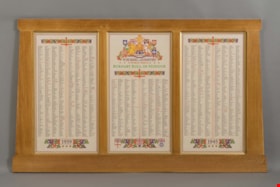
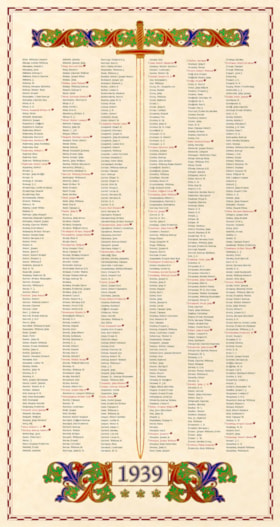
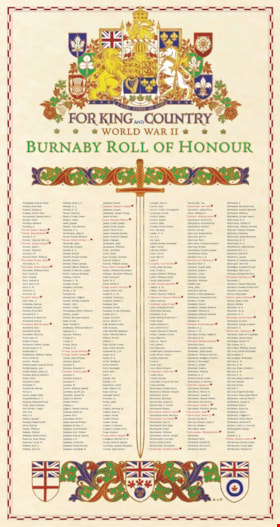
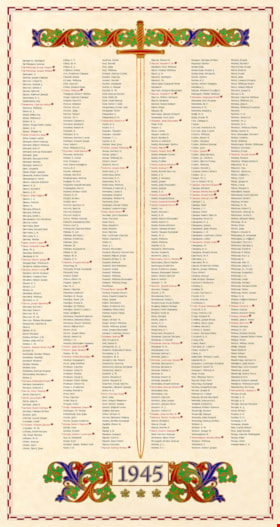
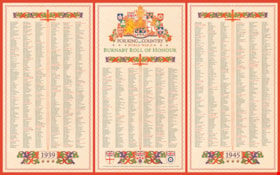
![Interview with Shirley Cohn, [1926-2023] (interview content), interviewed 2023 thumbnail](/media/Hpo/_Data/_BVM_Sound_Recordings/Oral_Histories/2023_0016_0001_001.JPG?width=280)


